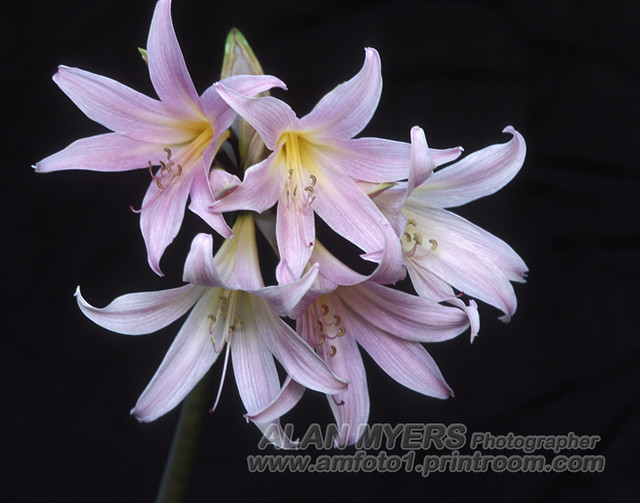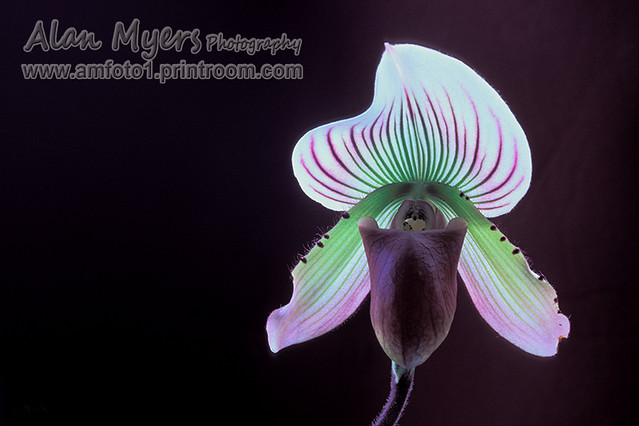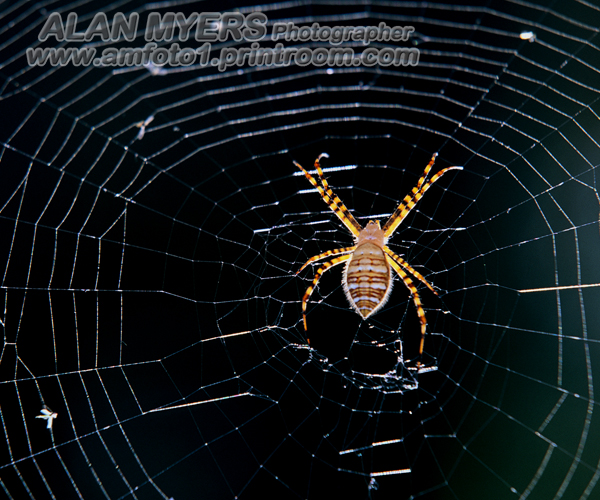Lens for photographing flowers up close
Mar 17, 2017 11:43:36 #
Mar 17, 2017 11:46:15 #
Mar 17, 2017 11:47:09 #
I don't see where a Sigma lens was mentioned but unless it was a true macro lens and not a zoom labeled with a macro feature like the aforementioned Tamron (actually the zooms are just a close focus lens & not a true macro). As for a close focusing zoom meeting your requirements, well that depends on what you want to shoot. Close up of the facets on an insect's eyes ? Forget it, zooms can't do it. Macro is much more demanding than most people realize. Zoom lenses are a series of compromises. They are normally designed to be at their best at certain apertures/focal lenghts & subject distances. whereas a true macro lens is designed for just close focusing & are flat field lenses to boot.
Sir Motley wrote:
I wish to buy at some time in the future a macro lens and a good just-walking-around lens. I am considering the Nikkor 105mm macro and the Nikkor 16-300mm. If I bought the Tamron macro that you were talking about, would that satisfy my requirements for both a macro and a walking around lens?
Mar 17, 2017 11:50:06 #
Mar 17, 2017 11:53:04 #
Screamin Scott wrote:
I shoot with a 105mm macro. Look at my Flickr images (insects are my favorite subject). Not an issue as long as you know how to approach them.
Boy, some of your images of insects are truly remarkable. I have a 105 mm macro lens (Nikon) also and agree that it's a terrific lens. How do you "approach" the insects you've photographed? I'm having a tough time guessing how you had the time to take so many great shots of insects, many of which could simply fly away or crawl away. Could you take a few minutes to explain how you "did it" ?
Best regards, Ricker
Mar 17, 2017 12:00:18 #
It helps to know the insect you want to photograph behavior. That and plan on following them around for awhile. Especially small butterflies. Try not to cast a shadow on the insect either as many will detect the light change and fly or run away. Note the Male Carpenter Bee image where it was on my finger. Knowing that male Carpenter Bees can't sting & have green eyes helped me determine that it was OK to have on my finger. Plus, I took it at a time when the bee was less active. Later in the day and the shot would not have happened. Oh, those images were one hand handheld with additional illumination.
Ricker wrote:
Boy, some of your images of insects are truly remarkable. I have a 105 mm macro lens (Nikon) also and agree that it's a terrific lens. How do you "approach" the insects you've photographed? I'm having a tough time guessing how you had the time to take so many great shots of insects, many of which could simply fly away or crawl away. Could you take a few minutes to explain how you "did it" ?
Best regards, Ricker
Best regards, Ricker
Mar 17, 2017 13:05:51 #
amfoto1
Loc: San Jose, Calif. USA
kodiac1062 wrote:
I have a Canon 80D. I have the option to use a Canon macro EF 100mm 1:2.8 USM or a Tamron 16-300mm 3.5-6.3 Di II PZD macro. Which lens would be better to use and would extension tubes help? Would a 50mm lens be better?
Definitely the 100mm macro lens. That's what it's designed to do. All the following were done with that lens:




For the above, the first (California poppies) used a Canon 20mm f2.8 USM lens with a 12mm extension tube... the second (red berries) used a Canon 24-70mm f2.8L USM without any extension... the third (rose bud) used a Canon EF 50mm f1.4 USM lens with 25mm extension.... and the fourth image (spider) was done with a Canon EF 70-200mm f2.8L IS USM with 25mm extension tube.
Do you have the tripod mounting ring for your Canon 100mm macro lens? If not, I recommend it. It's very useful on that lens, for macro shooting with monopods, tripods, focusing stages, etc. The 100/2.8 USM lens uses "Tripod Ring B". The 100/2.8L IS USM uses "Tripod Ring D". If the Canon rings seem pricey, there are cheaper third party. The ones around $50 seem okay, are made of metal. Avoid the 3rd party plastic cheapies... around $25.
If you want them and don't already have macro extension tubes, it's another place you don't want to "cheap out" too much. Avoid the $10 to $25 type without electronic contacts. For $50 to $75 you can get a rather plasticky "budget" set with the electronic contacts that allow you to change the lens aperture or use auto exposure and auto focus (which the really cheap ones don't support). I use a better, more expensive Kenko set and several of the Canon OEM extension tubes. They are about equal quality, but the Canon tubes are only available in two sizes (12mm and 25mm) and sold individually, while the Kenko set of three (12mm, 20mm, 36mm) typically sells for less than one of the Canon tubes.
I don't know your other lens... have no experience with it and would never buy or use a 20X zoom, personally.... but you might experiment with it. May or may not need macro extension tubes, depending upon how closely that lens can focus and/or how large your subjects happen to be. All the following were done with various "non macro" lenses, in some cases using extension tubes:




Mar 17, 2017 13:50:03 #
amfoto1
Loc: San Jose, Calif. USA
Sir Motley wrote:
I wish to buy at some time in the future a macro lens and a good just-walking-around lens. I am considering the Nikkor 105mm macro and the Nikkor 16-300mm. If I bought the Sigma macro that you were talking about, would that satisfy my requirements for both a macro and a walking around lens?
You'd get better responses, I suspect, posting your own subject rather than hijacking someone else's.
But, to answer your question... They are two very different things, a macro lens and a general purpose, walk-around lens.
16-300mm actually is neither. That's an extreme, 20X zoom that tries to "do it all". Typically those types of lenses have not been especially good at anything, have to compromise in some ways.... though they might be convenient since you practically never need to change lenses. I don't know about the Nikkor 16-300mm in particular... suggest you research it carefully, before spending your money. But a lens like that sort of defeats one of the primary purposes of an interchangeable lens camera... the capability to swap lenses and adapt the camera to different purposes. (Note... "20X" is an approximation referring to the range of the zoom... 300mm divided by 16mm is actually only 18.75X.)
Zooms have improved a lot in the last couple decades. But I still try to stick with 2X, 3X, 4X maybe 5X or 6X, at most: 12-24mm, 24-70mm, 70-200mm, 100-400mm. These typically compromise a lot less than the extreme zooms.
Your camera must be a DX model, if you are considering a 16-300mm. Chances are your camera came with a walk-around lens... probably an 18-55mm. That's actually a pretty good choice. But maybe you want a little wider range of focal lengths and/or faster focusing... so might want to consider the Nikkor 16-80mm or 18-140mm. These have variable apertures, not have particularly large apertures (for low light shooting or stronger background blur effects).... Some people prefer a large, non-variable aperture, walk-around zoom... such as Nikkor 17-55/2.8, Sigma or Tamron 17-50/2.8. Note that these are larger, heavier and necessarily have a narrower range of focal lengths... and typically a higher price tag.
If you already have an 18-55mm, an alternative might be to get lenses to complement that, such as a 55-200mm or 70-300mm telephoto zoom or a wide angle such as a 10-24mm.
Those are more true "walk-around" lenses. I don't have experience with them so you'll need to do some research. If they are able to focus pretty closely and at high enough magnification... or you use it with some macro extension tubes that makes a lens focus even closer... you may not need a macro lens.
But, if you want to do a lot of macro shooting, then a true macro lens would be the easiest way to do high quality work. For general purpose macro, a lens in the 85mm to 105mm range of focal lengths is what I recommend. This is a good compromise of size, price, working distance, and ease of use. There are more compact, shorter focal lengths... but they put you closer to your subject. And there are longer focal lengths that make for a lot more working space... but they are expensive and a lot more difficult to get a steady shot (more likely to need a tripod).
You can choose among Micro Nikkor 85mm and 105mm, Tamron 90mm (two versions), Sigma 105mm, and Tokina 100mm macro lenses. In Nikon mount, the Tokina is a "D" type lens, which does not have a built-in motor, so cannot autofocus on the more entry-level Nikon cameras (D3000 and D5000-series, presently). Manual focus usually isn't a problem for macro work, might even be preferable a lot of the time. But this lens might be less useful for other non-macro purposes, than the others that are able to autofocus.
Speaking of which, one reason macro lenses are somewhat specialized is that they are slower autofocusing. This is because the lens needs to move it's focusing group a long, long way to be able to focus from 1:1 to infinity! It also is because macro designs deliberately use a "long throw" focus mechanism, which emphasizes precision over speed. That's needed because at higher magnification depth of field tends to be very shallow, so focus accuracy becomes more important.
Mar 17, 2017 14:18:05 #
Good to check out used macro lenses. You can save some money that way.
Mar 17, 2017 14:22:46 #
What Nikon DSLR do you have? While I have more upscale DSR bodies, I prefer manual focus macro lenses. I pretty much only use the macro lenses ( I own 9 different AF & MF models from 55 to 180mm) for macro & close up shooting as I have any number of other lenses for other purposes. Better to start your own thread than to come in on another thread as you will get more responses that way.
Sir Motley wrote:
I wish to buy at some time in the future a macro lens and a good just-walking-around lens. I am considering the Nikkor 105mm macro and the Nikkor 16-300mm. If I bought the Sigma macro that you were talking about, would that satisfy my requirements for both a macro and a walking around lens?
Mar 17, 2017 14:24:34 #
Dutzie
Loc: I'd like to know
kodiac1062 wrote:
I have a Canon 80D. I have the option to use a Canon macro EF 100mm 1:2.8 USM or a Tamron 16-300mm 3.5-6.3 Di II PZD macro. Which lens would be better to use and would extension tubes help? Would a 50mm lens be better?
Use your feet and a tripod, canon 100 mm macro..
Mar 17, 2017 16:01:21 #
Dear amphoto-
I didn't mean to "hijack" anybody's submission. The original post mentioned the Tamron lens as being both a telephoto and a macro lens so I was merely interested in getting more information about that lens.
I am a newby on this forum so I don't know all the rules. So from now on, I will be extra careful not to "hijack" anybody else's submission.
John
I didn't mean to "hijack" anybody's submission. The original post mentioned the Tamron lens as being both a telephoto and a macro lens so I was merely interested in getting more information about that lens.
I am a newby on this forum so I don't know all the rules. So from now on, I will be extra careful not to "hijack" anybody else's submission.
John
Mar 17, 2017 16:27:49 #
Screamin Scott wrote:
It helps to know the insect you want to photograph... (show quote)
Thank you very much for the excellent information. I intend to put into practice your valuable advice. I'm still marveling at many of the really outstanding images that you have taken/created! Thank you, again, for making the collection of images available for us to see/study.
Best regards to you, Ricker
Mar 17, 2017 16:50:36 #
kodiac1062 wrote:
I have a Canon 80D. I have the option to use a Canon macro EF 100mm 1:2.8 USM or a Tamron 16-300mm 3.5-6.3 Di II PZD macro. Which lens would be better to use and would extension tubes help? Would a 50mm lens be better?
I have the Canon 100mm f2.8 macro and would say of what you are asking it is far superior. It is a true macro where the Tamron is not close to it. the Tamron only goes to 1:3.4 where the Canon goes to 1:1 and is designed to maintain image quality with tubes as well that the Tamron would be not as good at. Even the Canon 100-400mm L MII which is not a "macro" goes to 1:3 which beats the Tamron macro. Some makers use the term "Macro" very loosely.
The Canon will also be demonstrably sharper edge to edge than the Tamron as well.
Avoid the 50 as the working distance is very close. At one time that was all that was available but the 100mm is pretty much the standard and now some even go longer to 200mm but the 100mm is just versatile. Canon has a 180mm but it is slower.
Happy hunting but I say the 100mm is the best you can get.
PS, If you can afford the IS L version it is incredible for flowers etc because of the multiple IS features it has dedicated to macro photography that are totally lacking on other lenses.
Mar 17, 2017 17:00:27 #
This is what I used in 1974 when at a Dutch flower show during Easter. I was shooting a Pentax AE slr with a 11 or 15mm extension tube and 400 fixed lens. I was pushing the asa 160 color slide film to 600. I could shoot close ups of the flowers from about 10' with all the blossom in focus but nothing else. The green house was well lite so the shutter speed was not too slow. I had many people ask me what I was up to and the easiest answer was to let them look though the view finder. Most people there had slrs with a macro lens and had to get on top of the flower to get a shot.
This is not the normal setup for close ups but a long lens and extension tubes shorten the DOF and increase the stand off distance.
This is not the normal setup for close ups but a long lens and extension tubes shorten the DOF and increase the stand off distance.
If you want to reply, then register here. Registration is free and your account is created instantly, so you can post right away.



